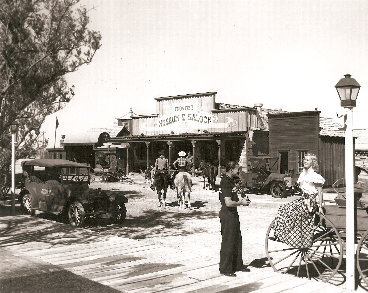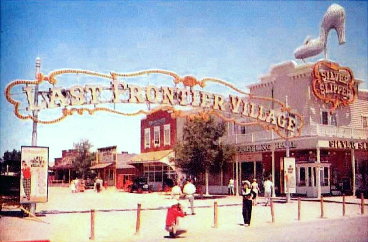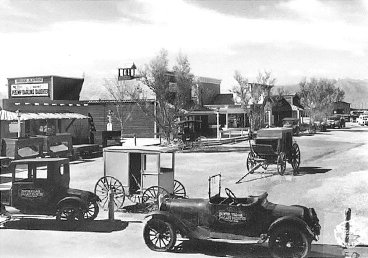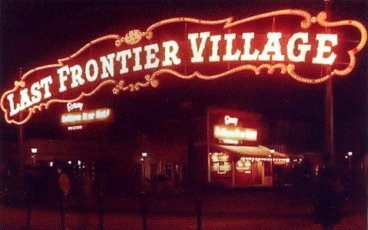|
[Index] Doby Doc: Part Three of Four
In 1947, he decided to build a small replica of a mining town on the western outskirts of Elko to display the multitude of treasures he had acquired over a 35 year period. He met with city officials, asking them for $50,000 to help with the project. They hardly listened to his plans before going on to other business. Can't really blame them. Doc was not noted for his honesty. The Last Frontier Hotel on the Strip in Las Vegas was poised to make its mark in gaming history. Its management was going to add a theme to their property that would draw people to their place. The idea is now a major cornerstone in southern Nevada gambling. Who provided the means to create the theme? It was Doby Doc and tons of history hauled from Elko County. The Last Frontier Hotel featured Western decor throughout the casino interior but it was contemporary and didn't have the true flavor of the American West. Neither did Las Vegas proper in 1947. Last Frontier owner William J. Moore, and his uncle, Robert Griffith, heard about Doc and his extensive collection. They contacted him Smarting after being turned down by the Elko City Supervisors, Doc was ready to move down south. He packed 2,786 boxes of collectibles, the rolling stock of at least one entire narrow gauge railroad, Elko's Chinese Joss house, the Tuscarora jail, and an old schoolhouse from North Fork, Nevada.
It opened in 1950. This was before Disneyland. When the smoke cleared, Doby had put in three complete railroad trains, a drug store, general store, post office, schoolhouse, jail, joss house and the printing plant of the Reese River Reveille, the state's oldest newspaper. Later additions, mostly gambling oriented, expanded the Village.
The Last Frontier Village at the hotel became, in the words of Moore, "The greatest tourist attraction in the West." Doby spent a lot of time at the Village regaling visitors with his version of the wild West. His title was curator. A more accurate designation would have been "extraordinary bull s--t artist ." Last Frontier Hotel with its western village opened a flood gate of theme attractions. The trend has continued. There is nothing in the world that even approaches the excitement of Las Vegas. Legalization of gambling in other states seems to have made hardly a dent, if any, in Las Vegas gaming profits. Doby probably had no idea what he would create but it took most of the memorabilia he had "borrowed" and stolen for decades up in Elko County. Someone once said he bought Elko's Chinese Joss House. That's bull manure. Whenever someone asked him for a bill of sale, he said, "It was a verbal deal."
Remember, too, that Moore and Griffith were not preserving the past out of the goodness of their hearts. They used the artifacts to attract more players to the Last Frontier.
Benny Binion, in a taped interview for the University of Nevada at Las Vegas, perhaps said it best, "Doby Doc's just the damnedest character you ever seen. He came to Nevada in 1906, and just picked up junk, you might say, and run it into a fortune, just a hobby with him. Just a - he's kind of a pack rat." Doc, a pack rat? Those little desert critters take something and leave a little gift in its place. Don't remember Doby ever doing that. Eventually, there was a change of ownership of the Last Frontier. Doc had a disagreement with the new owners. Saying they were not honorable men, overnight he moved all his property from the Village to a cluster of warehouses he owned near the airport. With the disagreement, whatever it was, Doby closed down the most popular tourist attraction in Las Vegas. Continued in Part Four - August 2007 Sources: "Doby Doc - Robin Hood of Elko County," by Jerry Hendershot, Northeastern Nevada Historical Society Quarterly, 88-4. "Doby Doc - The Continuing Saga," by Donald E. Getz, Northeastern Nevada Historical Society Quarterly, 89-3. "Black Wrangler - Reminiscences of Lawrence Jackson," edited by Howard Hickson, Northeastern Nevada Historical Society Quarterly, Fall, 1977. "More about Doby Doc," edited by Howard Hickson, Northeastern Nevada Historical Society Quarterly, 89-1. "The El Rancho Vegas and Hotel Last Frontier: Strip Pioneers," by David G. Schwartz, Ph.D.., University of Nevada at Las Vegas, July 8, 2000, Gambling Research - The Electronic Journal of Gambling Issues. "A Retrospective - Benny Binion Speaks," Internet site, World Series of Poker, University of Nevada at Las Vegas. Joe Bell, Elko, Nevada resident. Joe Mendive, Elko, Nevada resident. "The Last American - A Personal Odyssey" by Daniel Markoff, Sagebrush Headlight, Vol. 26, No. 1, 91st Edition, Spring 2005, Nevada State Railroad Museum, Carson City. "Doby Doc at 82 - A Western Original," October 1, 1972, and "Famed Doby Doc Tells All As Diamonds Mirror Past," October 8, 1972, both by Judy Carlos, Las Vegas Sun Scenic Magazine. Social Security Death Index, Ancestry.com. World War I Draft Registration Cards, 1917-1918, Ancestry.com. ©Copyright 2007 by Howard Hickson |
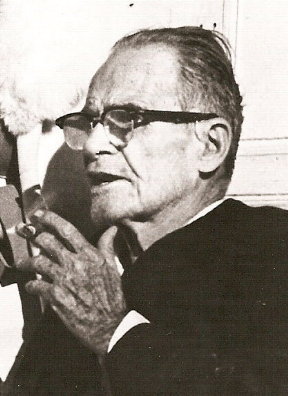 "Keep your
hide and mind clean and live close to God." - Doby Doc
"Keep your
hide and mind clean and live close to God." - Doby Doc
